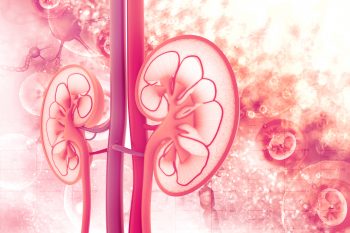
Diabetes
Previous studies have documented associations between chronic kidney disease (CDK), obesity, and metabolic syndrome. However, there are few data available on how those associations vary across obesity/metabolic phenotypes in males and females.
Chyng-Wen Fwu and colleagues conducted an analysis of data from the 2003-2020 cycles of the National Health and Nutrition Examination Survey for 8586 men and 8420 nonpregnant women ≥20 years of age. Results were reported during a poster session at the American Society of Nephrology Kidney Week 2023 in a poster titled Association of Obesity, Metabolic Syndrome, and Diabetes With CKD in Men and Women: National Health and Nutrition Examination Survey (NHAMES), 2003-2020.
CKD was defined as albuminuria or estimated glomerular filtration rate <60 mL/min/1.73 m2; metabolic syndrome was defined as three of the following: hypertension, prediabetes, hypertriglyceridemia, low high-density lipoprotein cholesterol, and/or central obesity; and obesity was defined as body mass index ≥30 kg/m2. CKD, metabolic syndrome, and obesity were defined by physical examination and/or results from fasting laboratory samples.
Diabetes was defined by self-report, prior diagnosis, and/or high fasting glucose or hemoglobin A1c. Participants without diabetes were further categorized based on four obesity/metabolic phenotypes: (1) metabolically healthy nonobese (MHNO); (2) metabolically unhealthy nonobese (MUNO); (3) metabolically healthy obese (MHO): and (4) metabolically unhealthy obese (MUO).
The relationship between CKD and obesity/metabolic phenotypes was examined using multivariable-adjusted logistic regression models.
Among participants with diabetes, the prevalence of CKD was 36.7% for men and 35.9% for women (95% CI, 33.6%-39.8% and 32.2%-39.9%, respectively). In the MUNO group, the prevalence of CKD was 13.2% for men and 21.0% for women (95% CI, 10.6%-16.5% and 18.0%-24.3%, respectively). In the MUO group, the prevalence was 10.9% for men and 14.8% for women (95% CI, 9.1%-13.1% and 12.9%-16.9%, respectively). In the MHNO group, the prevalence was 5.6% for men and 9.6% for women (95% CI, 4.9%-6.5% and 8.5%-10.9%, respectively). In the MHO group, the prevalence was 4.6% for men and 8.4% for women (95% CI, 3.4%-6.2% and 6.6%-10.7%, respectively).
There was an association between CKD and the metabolically unhealthy phenotypes in men (adjusted odds ratio [aOR], MUNO 1.94; 95% CI, 1.41-2.687 and MUO 1.83; 95% CI, 1.40-2.38). In women, there was an association between CKD and the MUNO group only (aOR, 1.50; 95% CI, 1.12-1.99).
In conclusion, the authors said, “These findings suggest different associations between metabolic syndrome and CKD between males and females. Understanding how sex-specific differences such as sex hormones modulate the interaction between obesity/metabolic phenotypes and CKD may provide additional avenues for prevention and treatment.”
Source: Fwu C-W, Barthold J, Kimmel PL, et al. Association of obesity, metabolic syndrome, and diabetes with CKD in men and women: National Health and Nutrition Examination Survey (NHANES), 2003-2020. TH-PO923. Abstract of a poster presented at the American Society of Nephrology Kidney Week 2023; November 2, 2023; Philadelphia, Pennsylvania.







 © 2025 Mashup Media, LLC, a Formedics Property. All Rights Reserved.
© 2025 Mashup Media, LLC, a Formedics Property. All Rights Reserved.